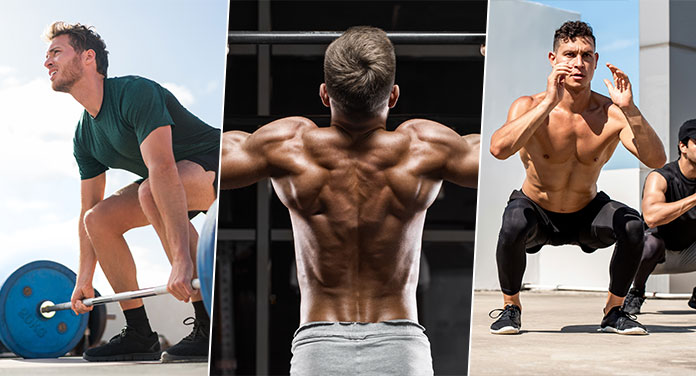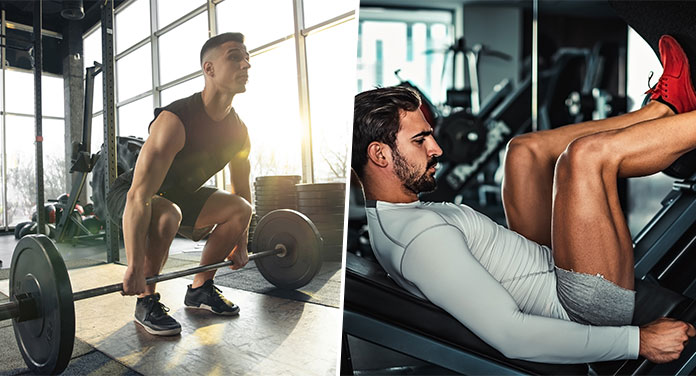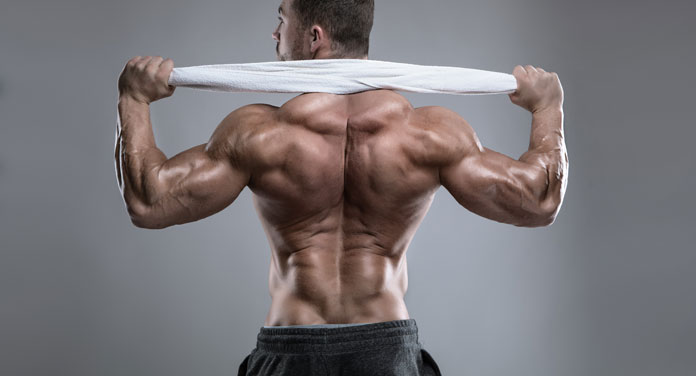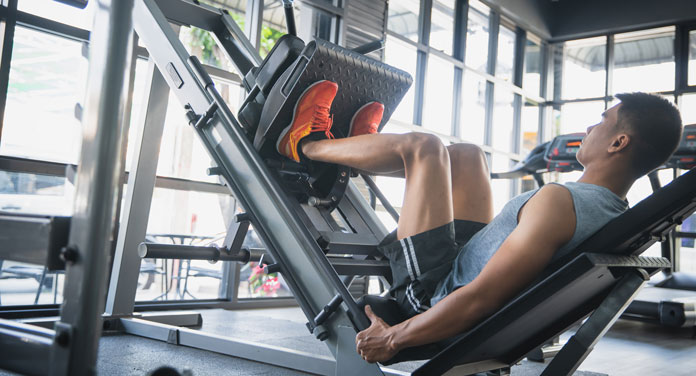Bodyweight exercises are becoming more and more popular in the fitness community. On the one hand, this is due to the fact that these exercises take place without any training equipment and can therefore be trained anywhere, and on the other hand, that training with your own bodyweight also addresses the deep muscles. The deep muscles in particular are there to stabilize the body sufficiently and thus avoid postural errors and the associated pain.
Mountain climbers are therefore one of the most popular full-body exercises. Here you will find out everything you need to know about the “mountaineering exercise”, why this exercise is so effective and what mistakes you should avoid.
What Are Mountain Climbers?
Mountain climbers are one of the most effective exercises to train the whole body. So this exercise should not be missing in any training plan! The mountaineering exercise can be performed without any equipment and takes place on the ground. The mountain climber involves dynamic push-ups that are combined with alternating jumps. By remaining in the push-up position and the accompanying leg dynamics, this exercise turns every home into a fitness center.
The name Mountain Climber says everything you need to know about the exercise. Similar to mountaineering in high alpine terrain, you pull one foot alternately towards the middle of the body. The entire body weight is on the arms and core muscles. Since the balance must be maintained, the exercise not only serves the surface but also the deep muscles.
How Do I Do The Mountain Climber Correctly?
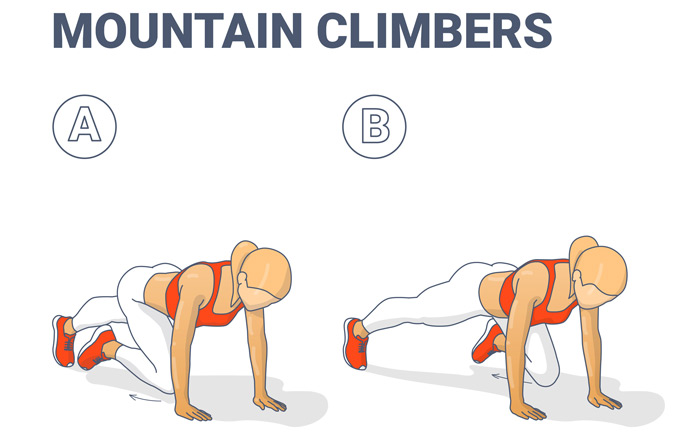
A training mat serves as a basis for this exercise, but you can also simply omit it. As a starting position, take the usual push-up position. The arms are about shoulder-width apart and the legs are hip-width apart. Also, make sure that your head is in line with your spine. This means that while you’re performing the exercise, you’re looking down toward the mat, not forward. Hands face forward all the time.
Now it’s time to do the exercise correctly. Keeping your hands and arms in the same position the whole time, alternately pull one knee toward the center of your body. This process takes place in leaps and bounds and dynamically. Meanwhile, the other leg remains straight and in the push-up position. As you do this, make sure your back is straight and your buttocks are close to the floor.
Muscle Groups Worked
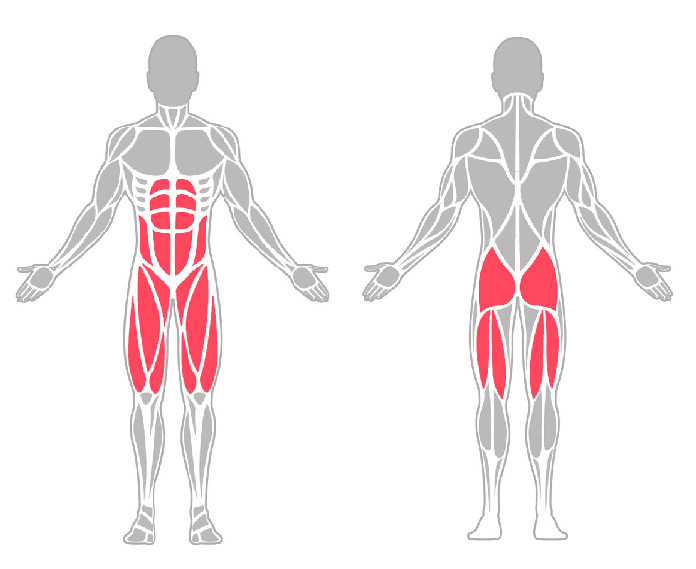
The mountain climber is primarily an exercise designed to train the abdominal muscles. Nevertheless, numerous other muscle groups are involved in the execution of the mountain climber and make the exercise a full-body exercise. Above all, the straight abdominal muscles, the leg biceps, and quadriceps, but also the gluteal muscles are trained. Furthermore, the arms are not neglected in this exercise. Due to the holding power and support function that they have to provide, you primarily train the chest muscles, but also the triceps
Here is an overview of the muscle groups used:
- rectus abdominis
- hamstrings
- quadriceps
- glutes
- back extensors
- triceps
- chest muscles
- hip flexors
Since most of the muscle groups are leg muscles, the exercise not only increases strength but also burns an enormous number of calories. Since the muscle groups of the legs and buttocks contain the largest muscles, they have an enormously high energy consumption when they are used.
The mountain climber is therefore an exercise that supports both strength training and endurance training. As a result, not only does the cardiovascular system benefit from this exercise, but the body also gets a well-formed appearance.
In addition, with the Mountain Climber, you not only train the surface muscles but also the deep muscles. While the surface muscles reflect your external appearance, the deep muscles are responsible for the actual function of your body and get you moving. So it makes a lot of sense that you incorporate exercises like the Mountain Climber into your daily workout, not just training to look good.
What Variations Are There?
As with many sports exercises, the mountain climber can also be varied and rediscovered in numerous ways. This exercise can be particularly strenuous, especially for beginners. Therefore, a modification is that you do not perform the exercise with dynamic jumps, but slowly alternately lead your legs to the middle of the body.
However, if this exercise has already become too easy for you, you can make it more difficult with ankle weights. To do this, you simply pull standard weight cuffs around your legs and thus achieve a stronger training effect.
However, there are also direct modifications of the mountain climber that give you variety and take your training to a new level. The diagonal mountain climber is performed like the original exercise. The only difference is that you no longer move your right leg in the direction of the right arm, but in the direction of the left arm. Above all, you train the lateral abdominal muscles.
For absolute advanced users, there is also the option of performing the exercise with long jumps. You no longer alternately pull your knees to the middle of your body, but to the palm of your hand and place your feet just next to it. The long jump makes the exercise extremely difficult and ensures a maximum training effect.
Another option is to place your hands on an uneven or soft surface, such as a ball. This requires your upper body to perform at its best to stabilize the entire body.
Typical Mistakes
Training mistakes should generally be avoided in sports, as they often lead to injuries that are associated with a long break in training and destroy any results achieved.
It is important for mountain climbers that you remain in constant tension. That means your back shouldn’t be sagging, but it shouldn’t be arched either. The entire torso area should be under tension during this exercise and only move minimally. The main actors are the legs. So make sure you have tension from the hips down to avoid pain and injury.
The correct position of the shoulders is also crucial. These should not be too close together, but not too far apart either. The natural shoulder position serves as a guide.
If you follow all the tips and advice mentioned, nothing stands in the way of successful training!


